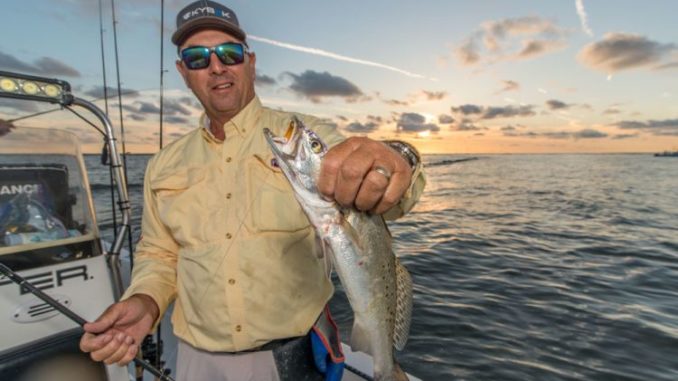
When conditions are slick enough to allow you to work the beaches on the barrier islands, ice chests can quickly fill with solid trout throughout the summer.
But Capt. Tommy Pellegrin said there’s more to success than just trolling down the sand banks.
Instead, he focuses on the sweet spots.
“I look for the drains,” Pellegrin said. “That’s where the fish will be concentrated because the bait’s got to come out of those troughs.”
Finding these productive spots is a matter of reading the water.
“On a calm day, you can see the water pouring out of the drains,” Pellegrin said. “Even on a rough day, you can see where the waves are going against the current, and you see some nervous water.
“That’s where the drain is.”
He said the same concept holds true for sandbars.
“The sandbars aren’t just continuous,” Pellegrin said. “The ends are openings that are just drains. On a falling tide, you can kill the trout there.”
Once drains are identified, catching trout is pretty easy.
“You want to cast into the drain and let the tide pull your bait to the fish,” Pellegrin explained.
He said boat positioning depends on the direction the current moves through the drain: Pellegrin puts his boat on the upcurrent side of the drain, casting into the submerged ditch.
“The trout will be on that upcurrent side, waiting to ambush bait as it washes through,” he said.
The whole trick to drains, however, is that they aren’t permanent.
“Each year you have to relearn the beaches,” Pellegrin said. “You’ve got to pay attention.”